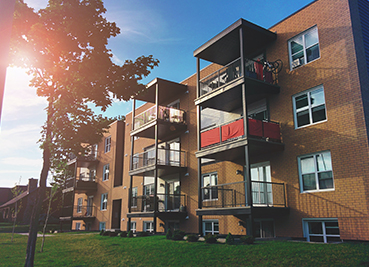
As seen in The Denver Gazette
Affordability, entitlement timelines and the high costs of development took center stage as commercial real estate professionals sat down to discuss current market forecasts at the Colorado Commercial Real Estate Symposium last week.
In short, they said, there are bright spots across multiple submarkets that have weathered the pandemic — but numerous challenges threatening those silver linings, too.
Denver Mayor Mike Johnston joined the crowd to offer his perspective on the city’s challenges, how they affect the commercial real estate market’s success, and how to solve them.
A mentor once told Johnston that when facing hard situations, it’s important to focus on both the “hard truths” defining the problem and the hope, or pathways, out of it, the mayor said, adding he took that approach to framing Denver’s challenges for the crowd.
“Those hard truths include facts like, yes, Denver is among the five or 10 worst cities in America right now on homelessness. That is a hard truth. Yes, it is a hard truth that Denver had, last year, the highest year of crime rates, in almost every category, in more than 20 years. Violent crime. Property crime. Drug crime. All all-time highs. Yes, it is also true that we are now I think tied with San Francisco for the single highest commercial vacancy rates in our city center of almost any other major city in the country,” he said.
Denver also faces an affordability crisis that has left half of the people living and working in the city struggling to afford housing, he said. Teachers and firefighters put more than 30% of their income toward rent, he noted.
The hope, Johnston said, is that none of Denver’s pressing problems — homelessness, public safety, economic revival and affordability — is unsolvable.
His choice to kick off his first term as mayor by rolling out ambitious homelessness reduction initiatives was deliberate, he said. The issue is a moral one for the city. Forty people have died living outdoors since he took office, Johnston said — but also a dire damper on business and quality of life in the city.
The city’s homelessness encampments generate 8,000 emergency calls a year, he said. One reason Johnston is pursuing micro-communities as a way to tackle unsheltered homelessness is because of their impact on safety, he said. By comparison, the city’s micro-community in North Park Hill generated three safety calls in a year’s time, he said.
The administration just announced a historic investment in restoring the police department’s ranks, he said, adding city hall aims to bolster co-responder programs that can dispatch behavioral health professionals instead of officers when needed.
With all of his initiatives combined, Johnston envisions a downtown where commercial real estate professionals can drive clients from Curtis Park to Union Station to Ball Arena “and never see an encampment.”
“And you would have officers that were visible, and you would have first responders who are available, and now you have the preconditions for you to be able to remind people what they loved about downtown Denver,” he said.
Accomplishing that goal will require converting some office to residential in the coming years, completing and expediting work on the 16th Street Mall, encouraging people to return downtown for work, expanding childcare downtown to support workers and helping businesses acquire transit passes to get their workers to the city center, Johnston said to the crowd at the Seawell Ballroom at the Denver Center for the Performing Arts downtown.
“And, it does mean working hard to incentivize the commercial lease holders who are here to stay,” Johnston said, asking those tenants to stick it out downtown instead of leaving for Cherry Creek, or Broomfield, or leaving Colorado together.
Once Johnston left the stage, a panel of some of the top producers locally sat down to discuss commercial real estate forecasts for Denver, not only for the downtown, but for submarkets throughout the metro area.
Moderator Celeste Tanner of Confluent Development asked panelists to start by laying out “bright spots” in the market.
Johnston hit the nail on the head when he asked tenants to avoid the temptation to leave the downtown for Cherry Creek, said Jamie Gard of Newmark, the panelist representing office leasing. Cherry Creek is a bright spot, he said.
“Although part of Denver, they are kind of stealing everyone’s thunder. They have figured out safety, quality, amenities. They haven’t figured out transit but COVID kind of solved that for everyone,” he said.
He also sees some foreshadowing of an office market on the rebound, he said.
“We are seeing a lot of small tenants in the market. We are not seeing the big 100,000-foot users that we used to see, or tech. We are just seeing smaller businesses be more entrepreneurial and get back into the market early,” he said.
Courtney Key of SullivanHayes, who represented retail leasing on the panel, spoke about common themes she is hearing in conversations with tenants.
Colorado is low on retail space inventory, she said, “and there is not a lot of new product that is being built and we have more tenant demand than we have supply.”
The cost of “pad” deals has been rising, she said, from roughly $115,000 three years ago to between $200,000 and $250,000 today. Tenants, such as a grocery store that requires a corner site, will step up to pay that price, she said. (A PAD site or outparcel is a freestanding parcel of commercial real estate located in the front of a larger shopping center or strip mall.)
“We’re seeing tenants push back a little bit now. We’re getting quoted some crazy numbers. We just got quoted $300,000 for a pad deal,” she said, adding that, while she told her client that quote was “offensive” and “egregious,” someone will be willing to pay it.
CBRE’s Andy Hellman, who spoke about multifamily sales, predicted that, while suburban products will fare well in the near future, urban areas will take some hits.
“This all plays into the larger concept of, how do we help organically, how do we help affordability,” he said.
The imbalance of supply that has permeated the market in the past decade might ease with the level of construction planned in the next two years, he said. There is ample new construction concentrated in the urban core right now, he said noting the number of cranes looming over Denver’s River North neighborhood (RiNo) and some markets will see oversaturation in the short term.
But because he expects construction will grind to a halt past 24 months, that conversation will shift in the long-term, he said.
Jessica Ostermick, also of CBRE, spoke about the industrial space outlook, although she cautioned it’s a hard picture to predict. The bright spots in the industrial market are complicated by counter points, she said.
At a high level, Ostermick welcomed tapering supply, saying out-of-state investors often comment on Colorado’s vacancy rates. As construction hits the brakes, rent growth will follow, and tenant demand is holding up, she said.
Tanner asked Cushman & Wakefield’s Mike Kboudi to offer up a dose of reality.
Fees are up, costs are up, entitlement times are stretching longer and longer, and “all of these things feel like they are spiraling,” she said.
So, has that affected land values? Kboudi’s initial response was a resounding and concise “yes.”
As the room laughed, Kboudi expanded.
His area of focus is residential land, he said, and while land values have taken a hit, the impact was not as significant as anticipated. There is pushback on land values, he noted, but the biggest issue in the market right now is cost.
People who already live in Colorado are glad to be near the state’s many amenities, he said, but “the bad news is, nobody else can move here right now.”
“There is no place for affordability in our market and it’s really, really expensive. We’re under supply by about 100,000 houses in our market right now and the only way that we can create some attainability in our market, for people like teachers and police officers and young brokers, to buy houses is to create more supply and put it in the ground,” Kboudi said. “And it’s nearly impossible right now to find more places to build houses and build them quickly.”




